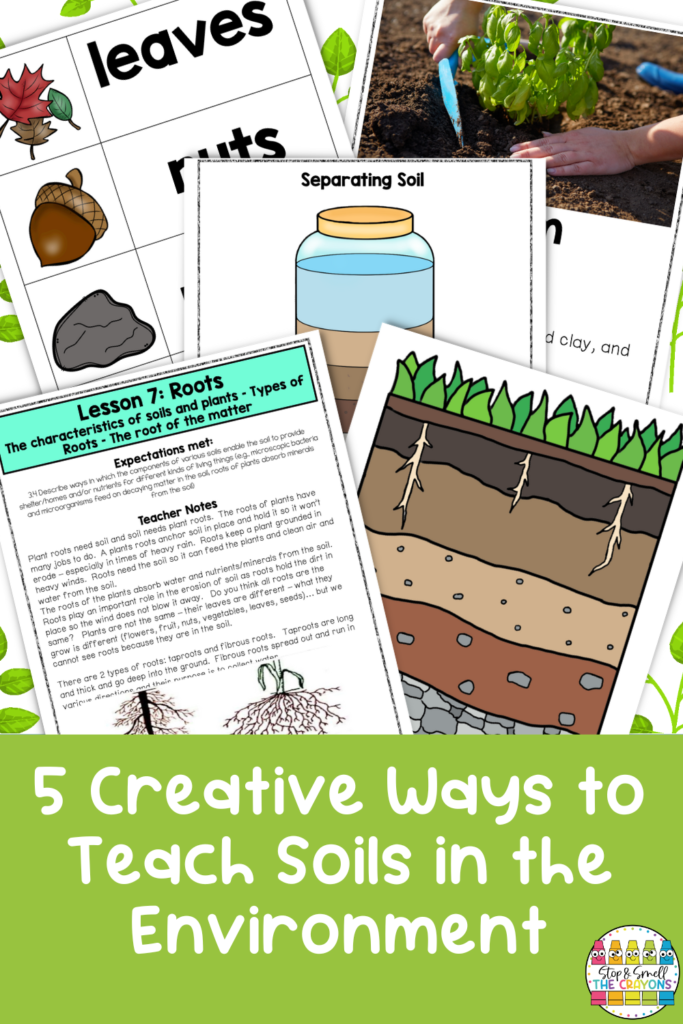If I’m being honest, the thought of teaching about different types of soils in the environment does not light my fire. But, it’s a “dirt”y job and someone has to do it! 🙂 And if you’re reading this blog post, then I’m assuming that “someone” must be you! Does teaching this science unit feel dull and monotonous to you? Well, it did to me, and one year I decided to flip that notion! I came up with some creative activities to make this unit come to life and they completely changed my feelings about teaching this standard! So, if you feel the same way that I used to feel, check out these great ideas for teaching soils in the environment!
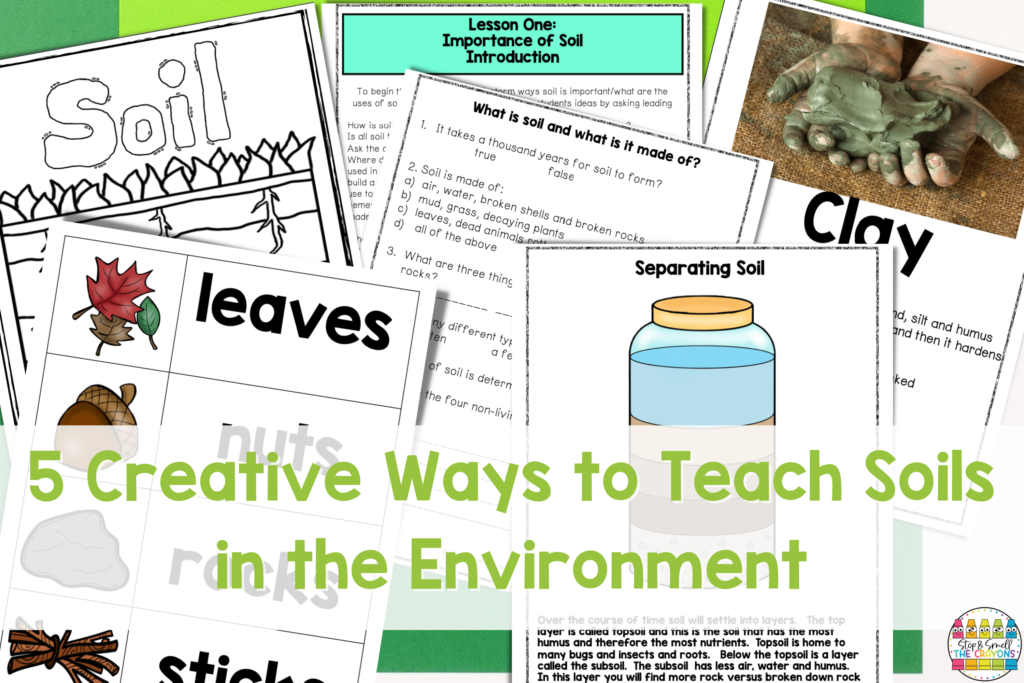
1. Dig in the Dirt!
What better way for students to learn about soil than to get their hands dirty?

Students need experience with the many different types of soils, so I provide samples of sand, clay, loam, and humus for them to explore (you can buy these soils from your local nursery or home improvement store).
I separate the soils into buckets for students to see, touch, and feel, then compare the different types of soils.
In this activity, we discuss ideas such as:
- what each type of soil might be good for
- the importance of each type of soil
- how plants, animals, and people benefit from the types of soil
Now head outdoors!
Now, your students may notice that their soils seem awfully “clean” (soils from nurseries will be free of debris). If not, point out the fact that dirt out in nature is much more interesting! In order for students to see what is “in” soil, I get out my shovel and we head outside for some outdoor learning!
With the principal’s permission (ahem), I take my students into the school field and dig some dirt. Be sure to provide each student (or pair/group of students) with a clear plastic tray, a pair of plastic tweezers, a magnifying glass, and a jar.
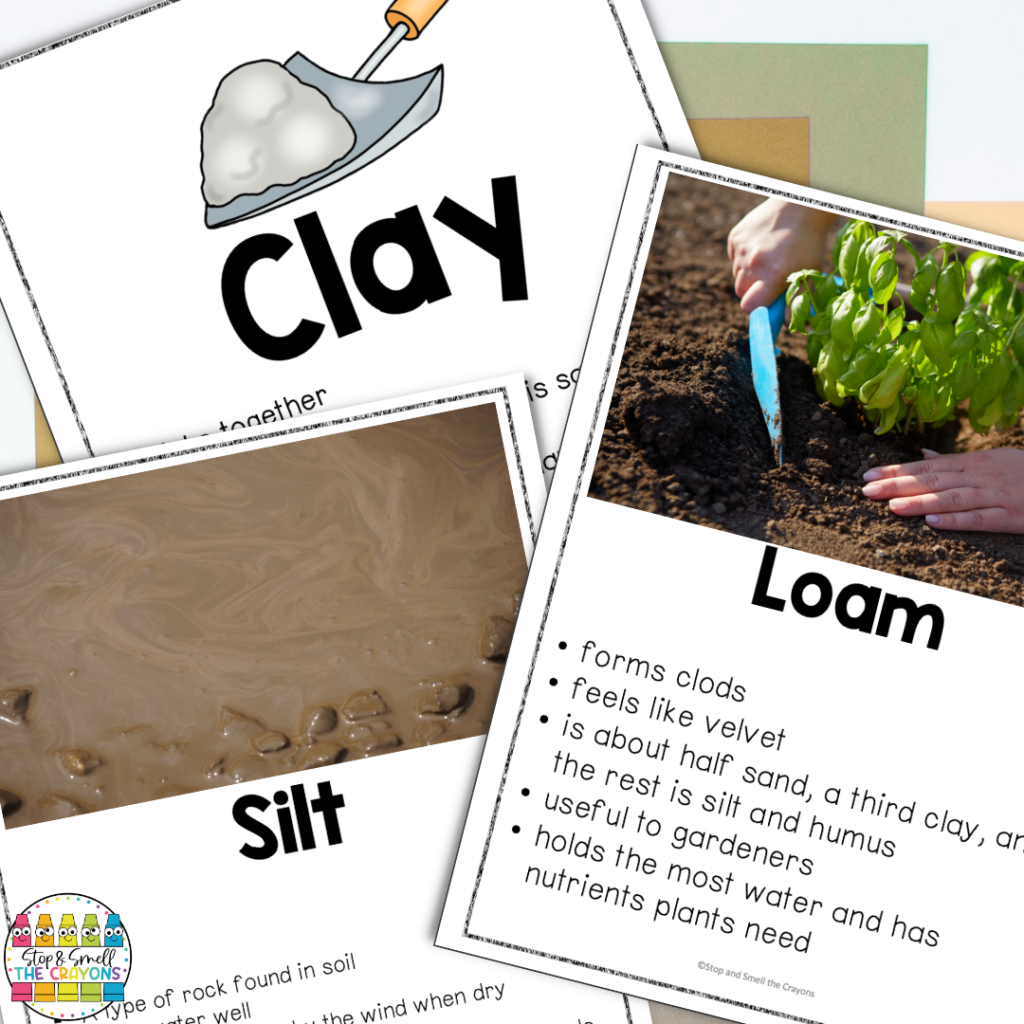
Dig up a chunk of dirt from the perimeter of the playground for students to discover what is in the soil. Once they have looked for a while, ask them what they found! In years past, we have discovered batteries, coins, animal bones, bugs, garbage, rocks, and the odd toy or two! There’s really no telling what your students will discover! Just be sure to replace the soil back into the divot when you are finished with this little experiment.
To make the most of this activity, I recommend teaching each soil type before students start getting their hands dirty. I like to use a fun video and the illustrated vocabulary cards in my Soils in the Environment resource in my TPT Store! The pages in this resource provide background knowledge about the soils we will see and there are student pages that are perfect for after their digging excursion!
2. Try a Classroom Compost
I’ll admit, the thought of making a classroom compost made me gag. I mean, dirt? Worms? Rotting food in the classroom? Can I get some Febreeze, please?! But let me be the first to tell you – this is an AMAZING project to have in your classroom! Your students will learn so much about soil from what they observe through composting!

To begin the lesson, I read the book Compost Stew by Mary McKenna Siddals. This is the perfect way to get your students interested in starting a compost and helps students understand the how and whys of a compost. After reading this book, you could choose to make an anchor chart of facts that your students learned to keep posted throughout the unit. This anchor chart would be a good reference for students to use when discussing and writing about composting later on.
Once my students are excited about composting, I bring out my very own classroom composter! I bought this one from Amazon and it was perfect for my classroom!
How I compost in the classroom
I begin by placing one type of compost item in each one of the three separate compartments.
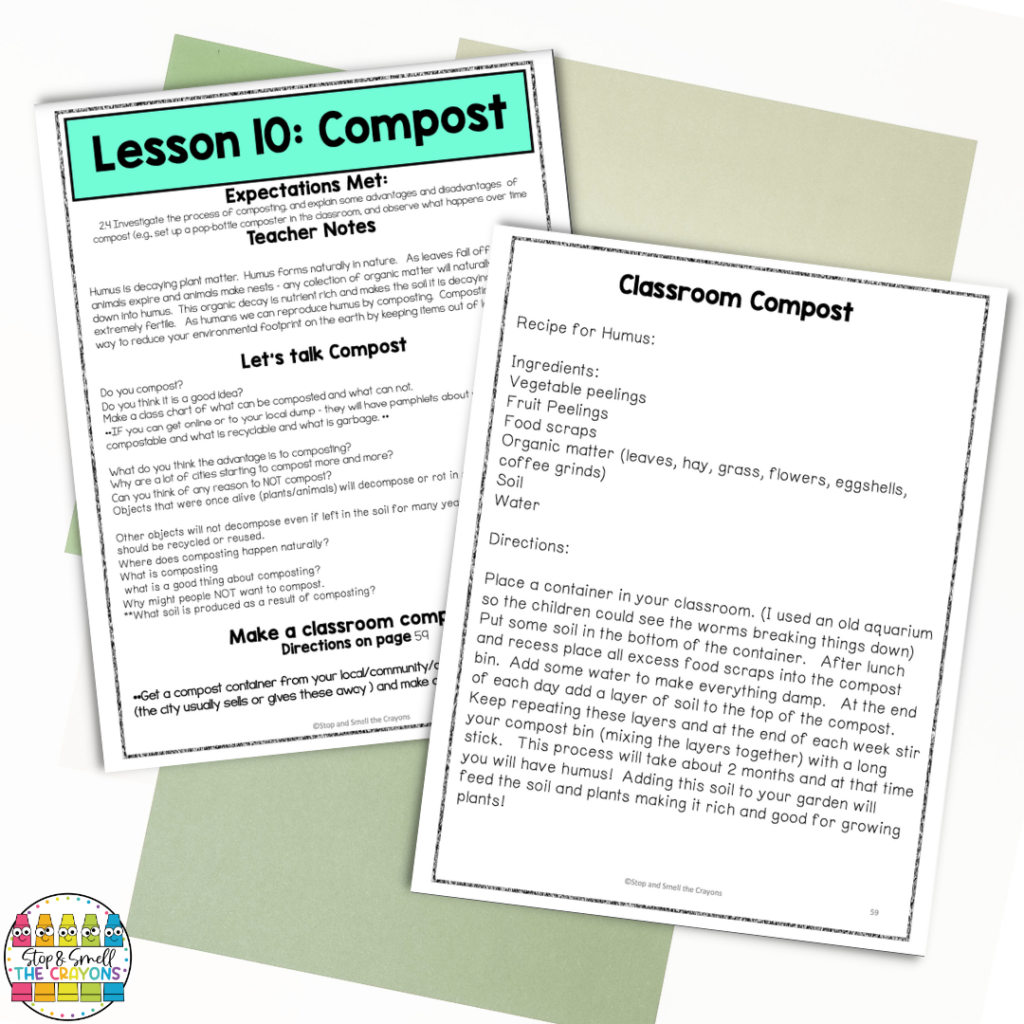
Since this compost container is see-through, it allows students to watch items decay and compost in real-time.
They can see how food scraps, leaves, grass, etc… break down and turn into rich soil that helps plants grow.
There is such a huge learning opportunity for students as they realize, through their observations, that some items decay rather quickly in one compartment while other materials (Styrofoam, plastic, etc…) DO NOT break down and compost.
Allow your students to observe and discuss their observations with their friends each day. Also ask your students questions like:
- Do you think compost is a good idea?
- What are the benefits of compost?
- Why might people not want to compost?
They will learn so much not just from what they see, but also from listening to what their classmates share and wonder!
If you are interested in creating your own classroom compost, I have step-by-step instructions in my Soils in the Environment resource! I promise that the benefit of compost will outweigh any doubts you may have. Plus, the composter doesn’t stink!
3. Classroom Pets teach about Soils in the Environment?
I know… How in the world does having a class pet have anything to do with a science unit on soil? Well, you have to start with the right kind of pet. Ants! BEST classroom pet EVER. Keeping an ant farm in your classroom will fascinate your students and teach them so much about soils!

Using a see-through Ant Farm, students can physically observe how ants move and aerate the soil. Ants tunnel through the soil making passageways that connect to one another. Watching tunnels and rooms develop more and more each day will help your students understand that soil is a home for many different types of insects and animals. How cool is it to see how things look below the soil we walk on?
By watching how ants dig and move in the soil, students can learn the different parts of the soil. They can also begin to understand how erosion works when they see the movement of the ants disturbing the soil.
Really though, the coolest part is hearing your students name the ants!
4. Hold a Sandcastle Building Competition!
Students love using their hands to explore, but it’s the tactile use of sand that helps students understand the properties of soil at the same time.
Before I let my students play in the sand, I like to teach them explicitly about it using my Soils in the Environment Unit. Using my picture Vocabulary cards and other lessons in this unit, students learn important information about sand such as:
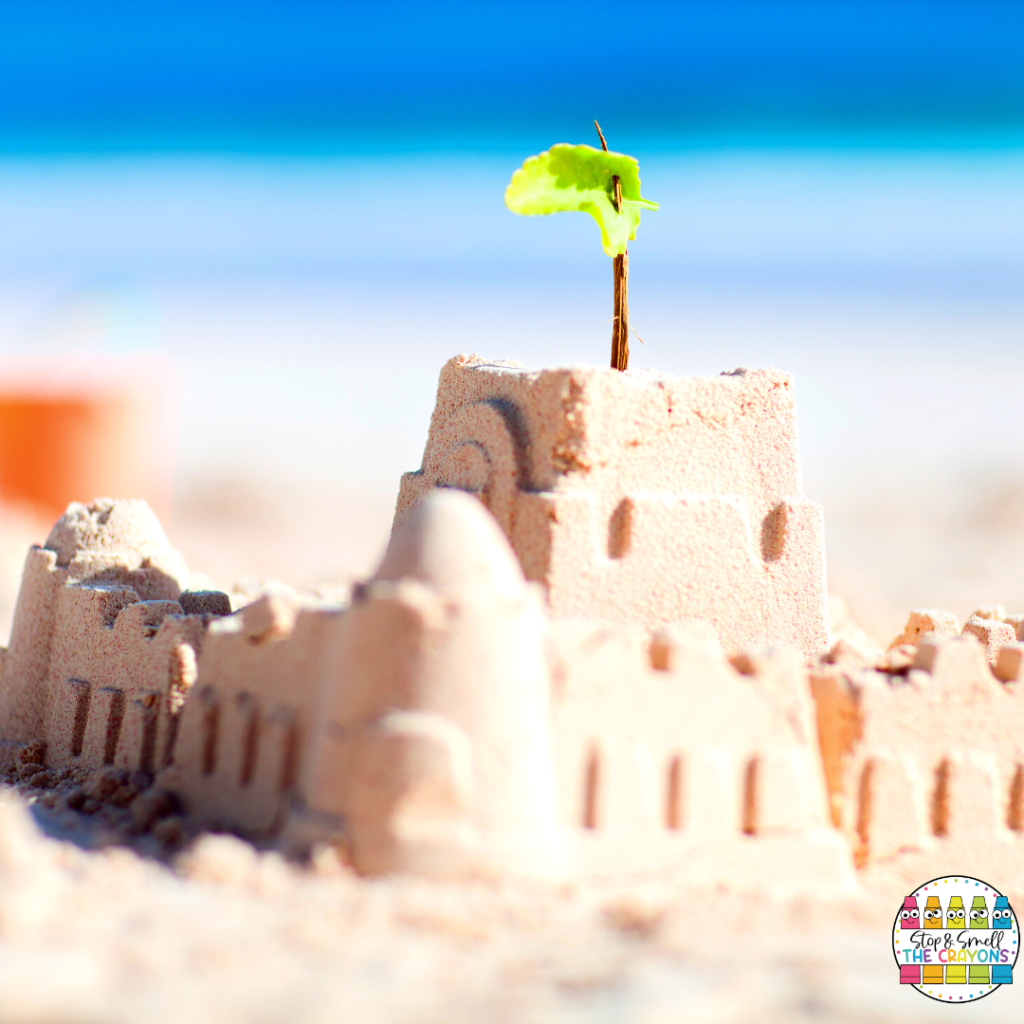
- its texture
- what it contains
- the effects of water
- how it compares to other soils
Once my students have a good understanding of sand as soil, it is time to break out the magic… sand, that is! Magic Sand is sand that is mixed with a binding agent that makes it moldable and able to hold its shape. Playing with this sand is a magical experience as it helps students to make connections between what they learned in our discussion and what they notice while playing.
Ask your students to form shapes and mold the sand into towers. While they are building, they can observe how the sand behaves and the ways it can be manipulated. Playing with the sand will help them understand the concept of soil structure, as well as how water and other factors can affect the consistency of soil.
Want to incorporate some STEM challenges into this activity? Go for it! Challenge your students to build the tallest sandcastle! Can someone build the tallest and skinniest sandcastle? What about a sandcastle with a perimeter of 30cm? The possibilities are endless!
You can pick up Magic Sand at your local toy store or Amazon, but it’s super easy to make your own! Watching this video on how to make magic sand will show you how it’s done. This idea is always a huge hit with my students!
Harness your inner Michelangelo with clay!
When students have sampled touching other types of soils, I like to surprise them with a fun art lesson using soil clay! Creating clay sculptures is a fun way to show how soil isn’t just talked about in Science class. There are many different areas of life where soils are used in ways your students wouldn’t expect… like in Art Class!
I start out by telling my students that we are going to use soil to create a sculpture. Some students immediately get that we are using clay because they connect the information that I have taught them about clay with their prior knowledge about Art, but others are confused as to how we can do this! I explain that we will use clay to make our sculptures and give each student some to work with.

After my student’s free play and build with the clay for a bit, I ask them to tell me about their experience building:
- Is there a difference in the textures of clay and other soils?
- What does working with clay help you understand about how soil behaves?
- What does working with clay teach you about how water affects soils?
- How does lack of water affect clay versus how it affects other soils?
With more knowledge and experience about the different types of soils comes better critical thinking, connections to the world around them, and class discussions. Working hands-on with clay helps students to see the absorption properties clay has. They can also infer how this type of soil would be good or bad for plants.
As an extension activity, you could take your students on a field trip to a local potter to show your class how clay is made into pottery. I have done this before and it is an amazing educational opportunity for your students!
Have Fun Teaching Soils in the Environment
These are just a few of the fun activities I do with my class when teaching about Soils in the Environment. I thought this standard was going to be boring, but boy was I wrong! When you add hands-on activities and experiments to a child’s learning you open up a whole new world!
If you liked these hands-on activities, check out the amazing print-and-go pages in my unit Soils in the Environment available in my TPT Store! This unit teaches the concepts that I mentioned in this post and so much more! If you are looking for student printable activities, illustrated vocabulary cards, and lesson plans ready to go, then this resource is exactly what you need to make your job easier! There’s even a unit test at the end that assesses your students’ comprehension of everything you have taught!
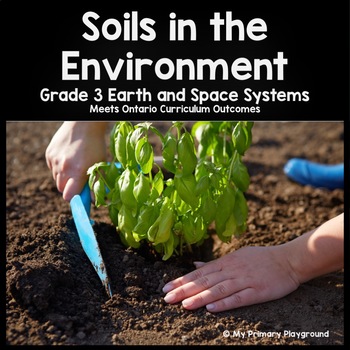
Head on over to my TPT Store to grab these ready-to-go resources for teaching Soils in the Environment. It couldn’t be easier (or more fun!) to teach this “boring” standard than with this creative, yet comprehensive resource!
Be sure to grab this Free Soils in the Environment Checklist. While this is created for the Grade 3 Ontario Science Curriculum, it can be used by anyone! Simply click on the image below to download.

More Grade 3 Science Resources
If you are looking for more engaging and hands-on science resources for third grade, check out these blog posts filled with practical and ready to use classroom ideas.
- 5 Hands-On Activities to Teach Growth and Changes in Plants
- Fun and Engaging Activities for Teaching Forces Causing Movement
- 5 Creative Ways to Teach Strong and Stable Structures
Save these Activities for Teaching Soils in the Environment
Pin this to your favorite classroom science Pinterest board so you can come back for these hands-on activities to help engage your students in learning about soils in the environment.
